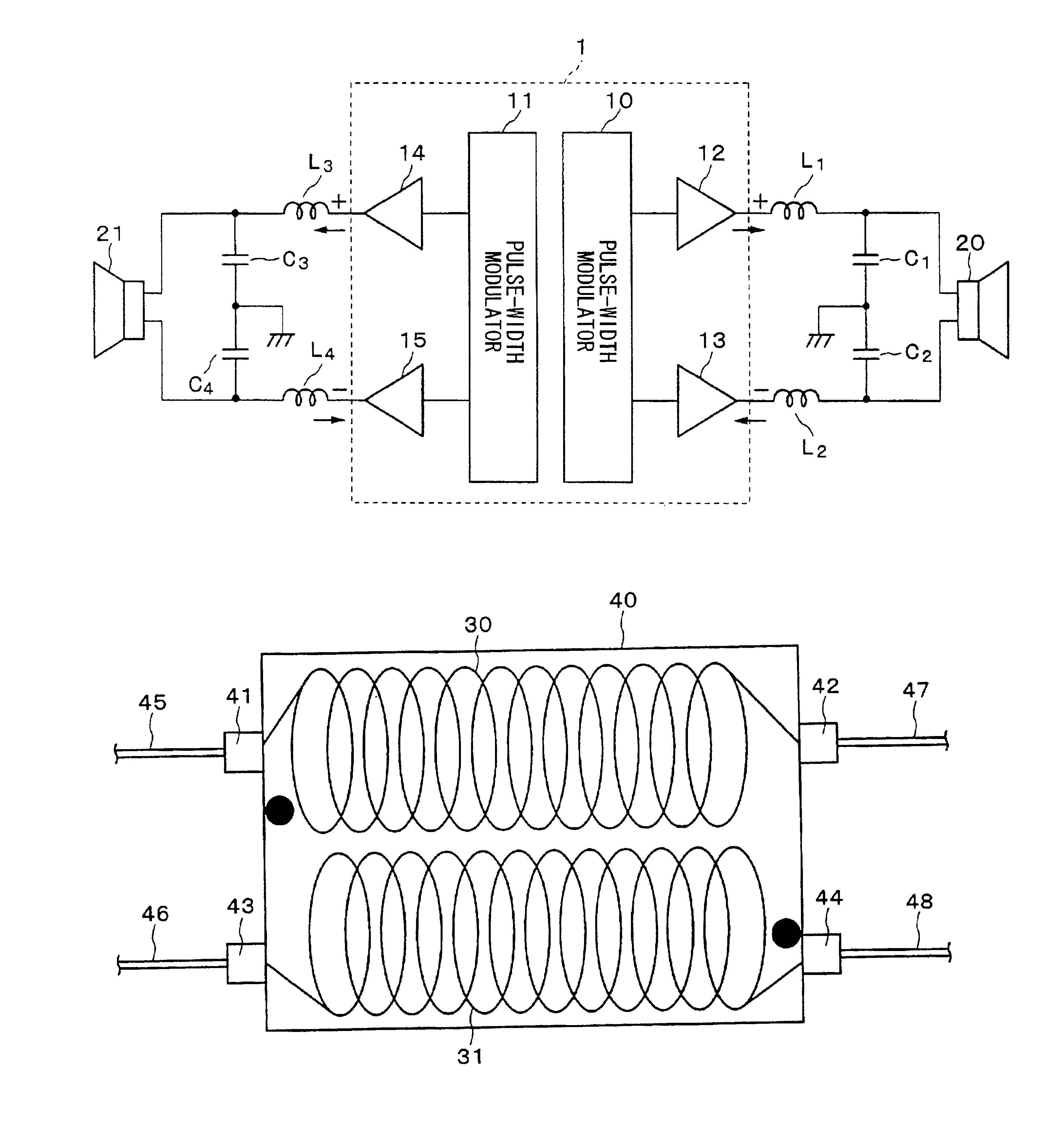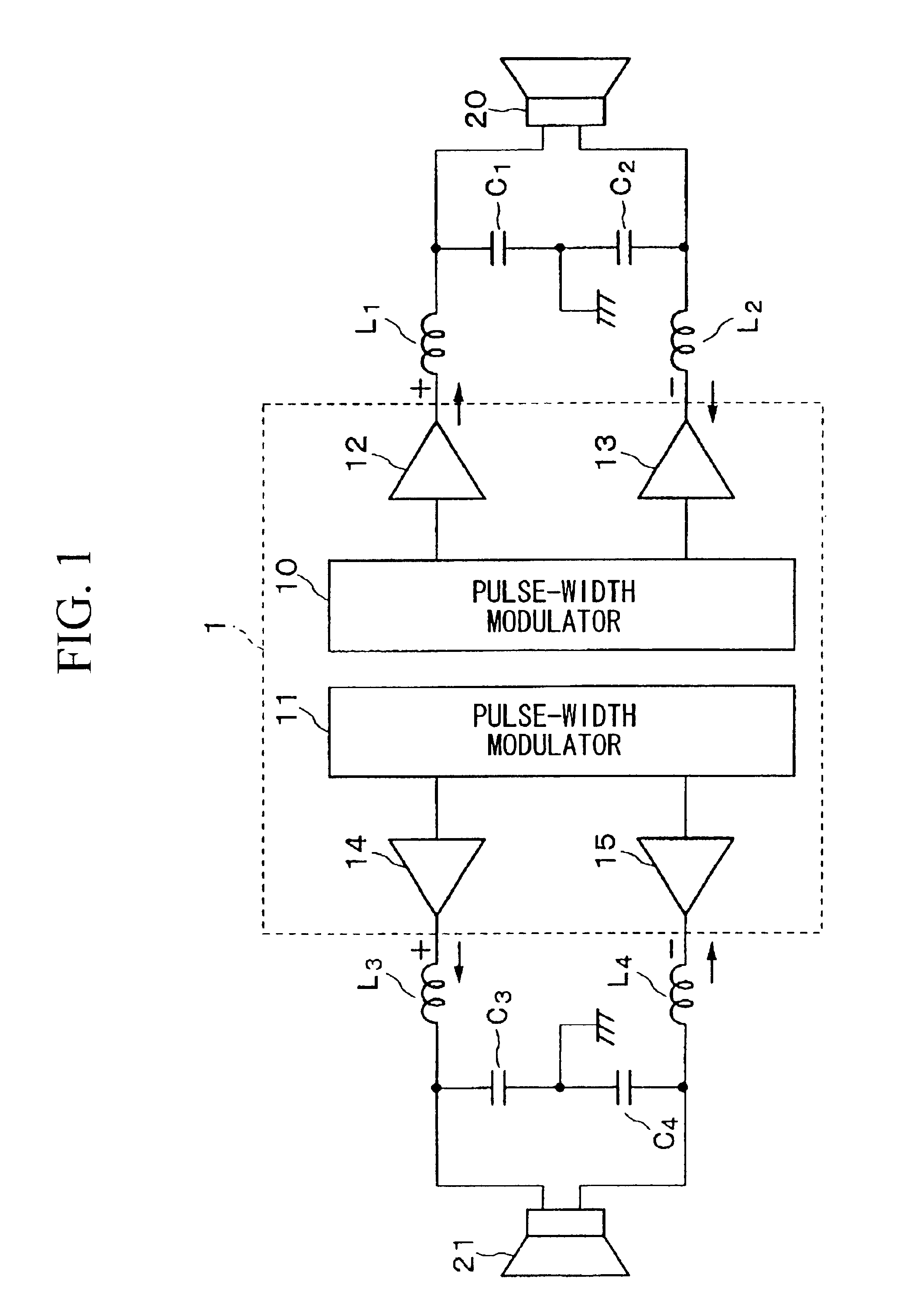Class-D amplifier of BTL output type using filter coil and low-pass filter
- Summary
- Abstract
- Description
- Claims
- Application Information
AI Technical Summary
Benefits of technology
Problems solved by technology
Method used
Image
Examples
first embodiment
The filter coil of the first embodiment incorporates an even number of coils, each having the same inductance, which are arranged adjacent to each other along axial directions thereof, wherein the adjacent coils differ from each other in winding directions. That is, plural pairs of the aforementioned coils are arranged in a single package. Thus, it is possible to realize reduction of installed areas of coils and reduction of the cost in manufacture of filter coils incorporating coils for use in low-pass filters connected with BTL outputs of class-D amplifiers.
In the class-D amplifier of the BTL output type, the positive polarity output and the negative polarity output both have the same magnitude (or amplitude) but differ from each other in phases by 180°. Therefore, a pair of coils, which differ from each other in winding directions, respectively produce magnetic fluxes in opposite directions, causing cancellation of magnetic fluxes and preventing occurrence of inductive coupling t...
PUM
 Login to View More
Login to View More Abstract
Description
Claims
Application Information
 Login to View More
Login to View More - R&D
- Intellectual Property
- Life Sciences
- Materials
- Tech Scout
- Unparalleled Data Quality
- Higher Quality Content
- 60% Fewer Hallucinations
Browse by: Latest US Patents, China's latest patents, Technical Efficacy Thesaurus, Application Domain, Technology Topic, Popular Technical Reports.
© 2025 PatSnap. All rights reserved.Legal|Privacy policy|Modern Slavery Act Transparency Statement|Sitemap|About US| Contact US: help@patsnap.com



